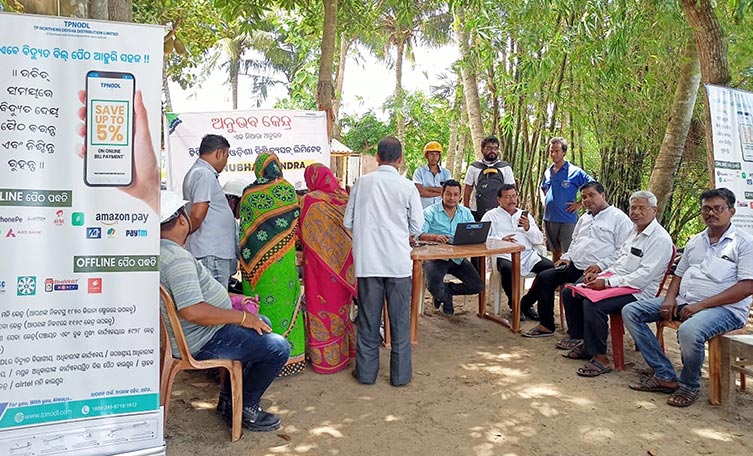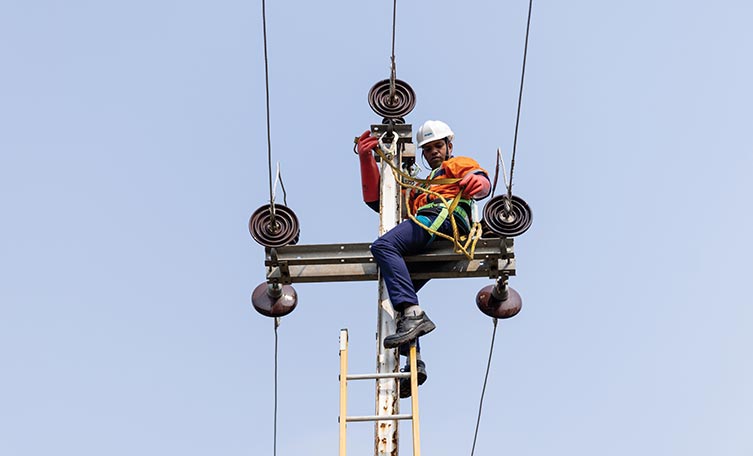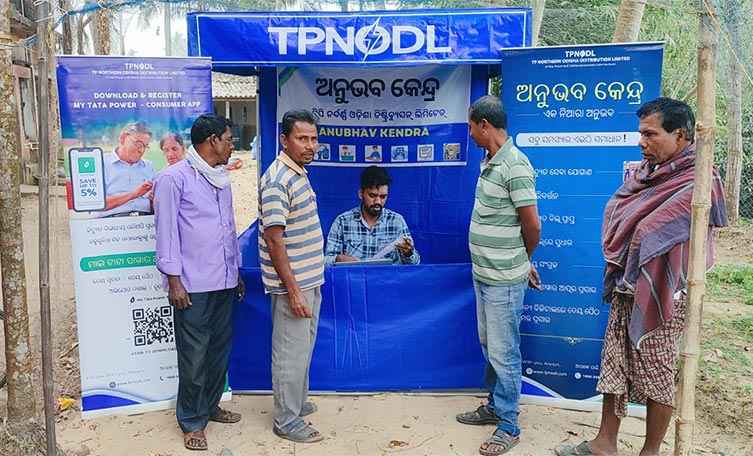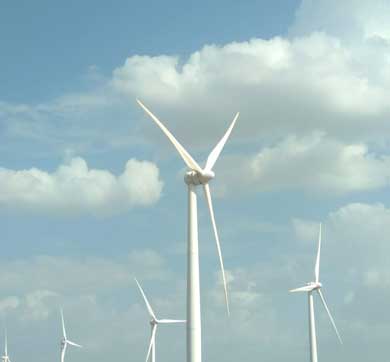December 2023 | 1676 words | 6-minute read
Tata Power is in the throes of a re-invention. Having built its reputation for reliable power over the course of a century, the company is transitioning from a purely utility company into one that is more customer-centric with a growing focus on retail. In 2020, Tata Power developed a long-term strategy to expand its distribution business.
After implementing a successful public-private partnership model in Delhi in 2002, where losses were brought down from 53% to less than 7%, Tata Power took its domain knowledge and expertise to Odisha. At a time when the world was reeling under the pandemic, Tata Power won the bid to manage all four discoms in the state. With this one move, Tata Power increased its consumer base from 25 lakh to ~1.3 crore — an over 5X increase — and coverage area from 1,185sq km to ~1,55,000sq km, in just two years.
Parivartan to Pragati
Between 2020 and 2021, Tata Power won the bid to manage operations of all four Odisha discoms, in a public-private partnership model, covering the entire state. Four entities were formed, namely Tata Power Central Odisha Distribution Ltd (TPCODL), Tata Power Southern Odisha Distribution Ltd (TPSODL), Tata Power Western Odisha Distribution Ltd (TPWODL) and Tata Power Northern Odisha Distribution Ltd (TPNODL), in a joint venture with the state government in a ratio of 51:49.
The takeover, at the time of the pandemic, was “extremely challenging for us,” says Sanjay Banga, President, Transmission and Distribution, Tata Power. “We were unfamiliar with the geography of the state and prevailing consumer behaviour patterns. Engaging with the employees of the four erstwhile companies was ruled out owing to Covid-19 protocols.”

Undaunted, Tata Power rolled out Parivartan to Pragati, a 10-module change management programme, to lead the new companies through this challenging period. This included retaining all employees from the erstwhile government entities, introducing them to the Tata work culture for improved operational excellence, and investing in network augmentation for reliable power supply and increased technology integration to reduce losses, which were between 11.5% and 22% in FY23.
As part of the overhaul, the company has committed to investing Rs 1,500 crore in each discom (a total of Rs 6,000 crore) over five years, towards upgrading and building infrastructure and deploying smart grid technologies, with the government investing around Rs 1,500 crore. The company has so far already made investments of ~ Rs 2,000 crore.
The success of the Parivartan to Pragati programme is seen in the fact that TPWODL and TPSODL received an A+ and A grade respectively at the Ministry of Power’s 11th Annual Integrated Rating and Ranking of Power Distribution Utilities released in 2023. The discoms were evaluated on parameters such as financial sustainability, performance excellence and external environment.
System overhaul
The experience of transforming an organisation from the inside out was not new to Tata Power. It had undertaken the transformation of the New Delhi discom in 2002 and successfully reduced losses to less than 7% in FY23. The joint venture, named Tata Power Delhi Distribution Ltd (TPDDL), has achieved significant progress, achieving an A grade in the 2023 Integrated Rating and Ranking of Power Distribution Utilities. “TPDDL is recognised as one of the 25 most advanced, technology-driven utilities in the world,” adds Mr Banga.
“We brought in 100 change agents from TPDDL and a few from Tata Power Mumbai to engage with the employees of the Odisha discoms,” says Mr Banga. The first thing they did was address the lacunae that the system had tolerated for so long. Poor funding meant the entire system had suffered. Offices lacked the most basic facilities, assets were unmapped, no one knew where power lines led, and there was no load dispatch centre. If there was an outage, no one would know. Using the template created at TPDDL, senior management visited section offices to engage with employees, understand their issues and identify inefficiencies and systemic problems. Tata Power countered each with a targeted solution.
Technology for robust infrastructure
“Tata Power believes in leveraging technology to improve operational performance and customer service,” says Mr Banga. Digital transformation, in the form of power system control centres and applications for planned or breakdown maintenance, has been undertaken to automate the network. The company has started drone patrolling for infrastructure inspection, asset maintenance and monitoring, distribution line surveillance and emergency response to ensure uninterrupted power. It has commenced onsite overhauling of power transformers, resulting in the reduction of power transformer failures.
Tata Power is using data analytics to detect and prevent power theft, reducing losses by 10% in FY23, surpassing the targets set by the Odisha Electricity Regulatory Commission.
Automation was also introduced to enhance procurement and inventory management. The entire network is now geo-tagged, ensuring accurate planning and optimisation of capital and operational expenditures. “Technology ensures transparency and accountability, and fosters an agile culture through real-time dashboards,” says Mr Banga.

Improving outage restoration
Earlier, low accountability meant technicians only attended to problems when there was a breakdown. As part of the overhaul, Tata Power started various initiatives in preventive and predictive maintenance of equipment and infrastructure in a proactive manner. A system of teams working in shifts was put in place to ensure that scheduled maintenance was built into everyday functioning. It lowered the number of breakdowns and outages, with faster resolution of disruptions in power supply.
This outage management system also helped restore power in just two days when Cyclone Yaas lashed Odisha in May 2021. “We are focussed on building a cyclone-resilient network in Odisha, given the state’s vulnerability to cyclonic weather conditions,” says Mr Banga. Measures taken include underground cabling, strengthening poles and towers, and enhancing the overall infrastructure’s resilience to withstand severe weather events. By investing in these measures, Tata Power aims to minimise their impact on the power distribution system.
Technology for customer centricity
The infrastructure upgrades and operational efficiency measures have helped provide reliable, quality service to the people of Odisha. Customers have also benefitted from the deployment of digitally enabled solutions, like smart meters to optimise energy consumption (1.3 lakh were installed in FY23), artificial intelligence-enabled optical character recognition-based meter reading and billing, a mobile application for faster resolution of complaints, Bluetooth metering and drone-based readings for inaccessible agricultural connections. To enhance customer service, Tata Power set up ~55 customer care centres and a 24x7 call centre to provide information and address complaints. In rural areas, 3,400+ fuse call centres (FCCs) and Bidyut Seva Kendras or Anubhav Kendras, each serving an area of ~40sq km, have been set up as one-stop experience centres, so customers don’t have to travel long distances to get issues resolved. Nearly 30,000 technicians have been recruited to operate these kendras/FCCs across Odisha. An army of 900 Bijuli Didis (Electricity Sisters), members of women’s self-help groups, have been inducted into the workforce. These didis serve over two lakh consumers in rural areas, taking meter readings, collecting payments and educating villagers on energy conservation, digital payments, etc.
These efforts have enhanced the customer experience, built trust, increased customer acquisition, and yielded positive outcomes in collections, safety, and power restoration times.
People power
Employees are a key stakeholder in any business and, after the takeovers, Tata Power was quick to reach out to the employees of the erstwhile government companies and reassure them of their roles in the new set up. “We assured employees that we understood the challenges within which they had worked and promised to build their capacities and bring in the right technologies to support them,” says Mr Banga.
Frequent interactions between linemen and technicians with seniors in the field as well as corporate offices helped boost morale. “Employees were keen to work and prove themselves,” says Mr Banga. “They had good functional knowledge but were unaware of how technology could enhance their work.” Tata Power brought in a structured training system, with behavioural and technical training modules, to help employees use the new technological tools and grow into a collaborative, customer-focused team. The talent management system, based on time-bound promotions, was amended to reward merit. Government policies that had not been implemented, were incorporated into the system and streamlined.
Importantly, Tata Power also focussed its efforts on employees’ occupational health and safety, promoting a zero-injury workplace. It set up a safety management system and provided appropriate personal protective equipment to linemen and technicians, who were till then working without any safety precautions.

Powering ahead
Next on Tata Power’s agenda is setting up a comprehensive disaster management control centre for all Odisha discoms, consolidating operations and enhancing coordination during emergency situations. It also plans to bring its clean and green energy products and solutions to the state. “In the next five years, Odisha will be the only state in India to have a very good tariff and 24x7 reliable power supply to all consumers, including commercial and industrial — giving it a competitive advantage over other states,” says Mr Banga.
Strategic expansion
Its performance in Odisha has proved that Tata Power has what it takes to be a leader in the distribution business — in urban and rural areas. The company is now looking to expand its distribution business and has identified about five states where it will pitch for licences. “The larger goal powering our retail business is to contribute to the improvement of the power distribution system,” says Mr Banga. “Privatisation of a part of the discoms fosters competition and drives improved performance.” Over the next five years, Tata Power plans to reach over four crore consumers through its distribution network.
Meanwhile, in Odisha, a small state with big aspirations, the promise of reliable power from Tata Power is a critical resource that will help it fulfil its aspirations of industrial growth, inviting every individual in the state to dream bigger.
—Cynthia Rodrigues




















